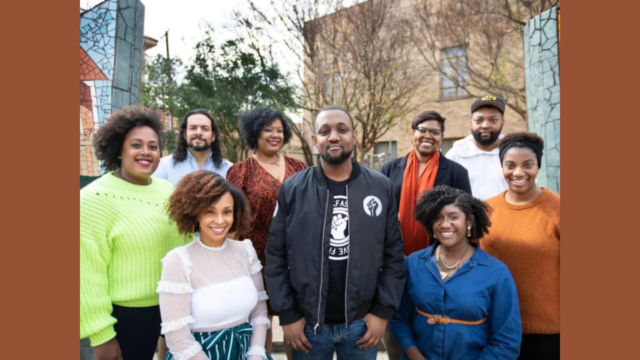By Lex Stewart
From – https://austin.culturemap.com/
Reprinted – by Texas Metro News

wo major advocacy organizations in Austin — Measure and the Austin Justice Coalition (AJC) — have released a new aerial view of exactly what’s going on in Black Austin right now.
“The State of Black Austin,” a 64-page, in-depth report, examines systemic disparities and inequities impacting the local Black community across six key areas: arts and culture, business and economics, education and employment, health and wellness, neighborhood sustainability, and community safety. The report was published on Measure’s website on Monday, March 11, and is available in full to the public.
The report stresses the need for greater accountability and transparency from the City of Austin, to fully implement past recommendations and initiatives supporting the Black community. It also calls for new co-governance models to empower Black residents in leading local development agendas and celebrating Black culture.
This comprehensive report serves as an update to the City’s 2008 African American Quality of Life study and details the progress, or lack thereof, made over the past 15 years in addressing issues highlighted in the original report.
Arts & Culture
The report reveals Black communities received only 2 percent of the City’s cultural funding from 2015-2021, despite Austin’s reputation as the Live Music Capital of the World. (At different points between 2016-2021, the Black portion of the population ranged from 7.25-8.52 percent.) More than 90 percent of surveyed Black musicians also reported experiencing racial discrimination when attempting to book shows at local venues. This highlights the urgent need to increase investment in Black arts and culture and address ongoing discriminatory barriers Black artists face.
Business & Economic
Economically, stark disparities persist between Black and white households in Austin. In 2019, the median income for Black households was just 54 cents for every dollar earned by white households.
These large gaps highlight systemic barriers that have prevented Black Austinites from building generational wealth and achieving financial security at rates comparable to other city residents. The report calls for targeted business development programs and increased access to capital to help address these economic inequities holding back the Black community.
Health & Wellness
Analyzing a 2015 study, this report shared that African Americans had the highest mortality rates in four out of seven health concerns (cancer, heart disease, stroke, and diabetes). The group also had the lowest life expectancies in Travis County compared to other groups, reflecting issues like reduced healthcare access and higher poverty rates. Ongoing tracking and coordinated efforts to address root causes of health disparities are imperative to improve wellness outcomes for Black residents. More widespread health education and prevention resources would also help address gaps.
Education & Employment
Black students made up just 6% of total enrollment in Austin Independent School District in the 2019-20 school year, yet accounted for more than 17% of those referred to law enforcement or involved in school-related arrests in recent years.
Removing race-specific goals from AISD’s performance scorecard also obscures disparities and prevents properly targeting interventions. High school graduation rates for Black students in Travis County have persistently lagged behind the 90% target.
The data from Austin’s Open Data Portal reveals stark racial economic differences. In 2019, the median income for African American households was 54 cents for every dollar earned by white households. Additionally, African Americans continue to face discrimination in hiring and promotion, leading to higher unemployment and underemployment rates compared to whites. Although unemployment was already higher for African Americans and Hispanics before COVID-19, the gap has widened even further since March 2020.
Neighborhood Sustainability
The report shows how Austin’s rapid growth has not benefited the Black community, as the percentage of Black residents has declined or remained stagnant at around 7.5% of total residents. Black residents also face disproportionate risks of displacement and homelessness amid rising housing costs. Equitable development measures emphasizing preservation of cultural districts, affordable housing, and anti-displacement policies are urgently needed to ensure Black residents can remain in Austin and thrive.
Community Safety
Black residents are still disproportionately impacted by over-policing, accounting for 25% of arrests in 2018 while only making up 7.5% of the city’s population.
The report posits that reducing reliance on police for non-violent situations through alternative safety resources focused on mental health, social services, and restorative justice is required to end over-policing of Black communities. More accountability for police misconduct is also demanded.
Final Takeaways
The “State of Black Austin” report underscores the need for measurable progress in improving quality of life for Black Austinites across all these interrelated areas. By providing data on systemic disparities, it aims to spur action by the City of Austin toward greater racial equity and accountability. It also addresses the actions that have not been taken, despite plans that were set or recommended years ago.
AJC will use the findings to push for measurable progress in improving quality of life for Black residents across these key areas. The full “State of Black Austin” report can be found on austinjustice.org.









You must be logged in to post a comment Login